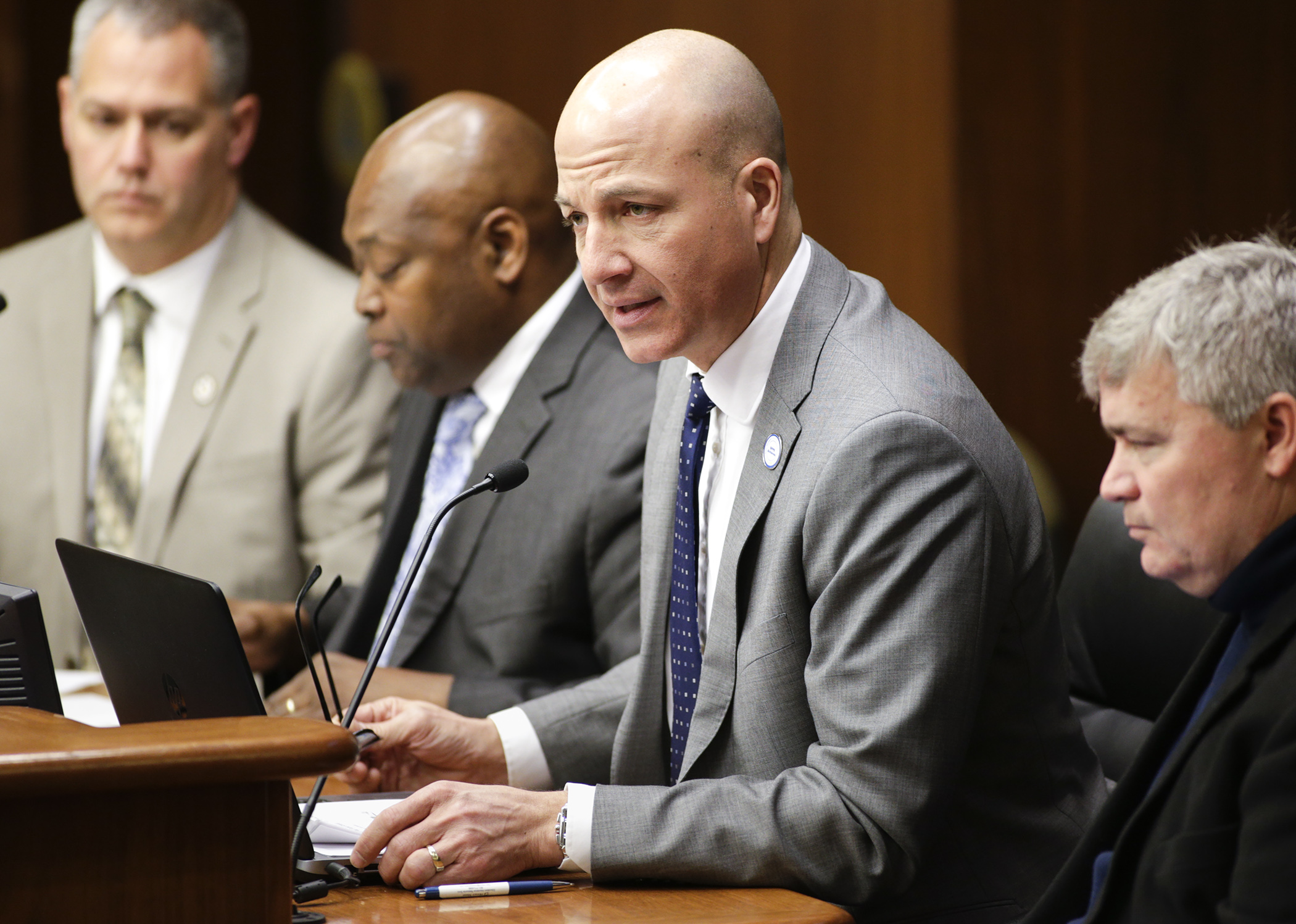School districts grapple with growing special education funding gap

Few education related topics draw as much widespread interest and concern as the special education cross subsidy.
To get a better grasp of the ways in which it is impacting public schools, the House Education Finance Division spent two meetings this week reviewing the state’s special education funding and enrollment trends.
According to Tom Melcher, director of the program finance division at the Department of Education, there has been a steady increase in the number of students enrolling in special education services over the past 15 years, increasing from 115,844 in 2003 to 147,605 this year. Possible reasons for this include better screening and an overall increase in K-12 enrollment.
While funding for special education has continued to increase, it has not kept up with inflation.
“We have increased from $1.6 billion roughly to $2.4 billion roughly during those 15 years in terms of the inflation adjusted expenditures for special education,” Melcher said.
The cross subsidy
The cross subsidy is the result of a discrepancy between the cost of providing mandated special education services, and the amount of aid a school district receives from the state and federal government to cover those costs.
The balance is paid for through the district’s general education budget, often at the expense of cutting teachers, class offerings, arts programs and extracurricular activities.
“We’re making a choice right now, and we’re diminishing the quality which every child and every community deserves by doing that,” said Carlton Jenkins, superintendent of Robbinsdale Area Schools.
Rep. Jim Davnie (DFL-Mpls) noted students who receive special education services spend most of their time in regular classes.
“I often remind people as we have this conversation that the underfunding of special education costs affects the special education students as well as the their peers,” he said. “When you’re having to trim other programs, extracurricular opportunities, transportation, everybody gets shorted in that process, it effects all the students.”
The cross subsidy not only impacts all students, it impacts all public school districts regardless of location, student population or property tax base.
According to the department, on average, there is an $830 cross subsidy per K-12 student. However, this can vary greatly from district to district, with the cross subsidy for St. Paul Public Schools projected to be approximately $1,400 per student.
“It’s the highest in core cities, Minneapolis and St. Paul,” Melcher said. This is the result of charter schools and cooperatives being able to charge back 90 percent of services to the resident district.
A new funding formula
Over the last decade, steps were taken to address the issue by implementing a new funding formula and increasing state aid. However, it is complex, criticized for being outdated and hasn’t stopped cross subsidy growth.
“The bottom line, at the end of the day here, we have got a lot of complicating changes to the funding formula,” Melcher said. “But there was a significant increase in the dollars, and school districts were guaranteed they would receive no less aid for Fiscal [Year] 16 than they had under the old funding formula.”
Calls for more federal funding
During the 1970s, the federal government enacted laws requiring schools to provide special education services. Requiring the delivery of high quality special education services to any student who needs them is noncontroversial. The problem lies in the funding.
At the time of enactment, the federal government said it’d pay up to 40 percent of special education costs. In reality, it has covered between 10-15 percent and, when factoring in inflation, it’s now covering less than 8 percent of that cost. This has left Minnesota with an $800 million funding gap that’s growing.
“We have had significant increases in state aid over the years but quite a bit of that is just simply to replace the reduction in the federal share,” Melcher said. “Not to say the federal dollars have gone down, but they’ve been flat, so they’ve been losing ground to inflation.”
Several division members expressed concern over the federal government not holding up its end of the bargain. Rep. Bob Dettmer (R-Forest Lake) said the issue has gone on too long, while Rep. Mary Murphy (DFL-Hermantown) and Rep. John Huot (DFL-Rosemount) indicated it was time to push for more action, whether it be through legal means or outreach and advocacy.
Related Articles
Search Session Daily
Advanced Search OptionsPriority Dailies
Speaker Emerita Melissa Hortman, husband killed in attack
By HPIS Staff House Speaker Emerita Melissa Hortman (DFL-Brooklyn Park) and her husband, Mark, were fatally shot in their home early Saturday morning.
Gov. Tim Walz announced the news dur...
House Speaker Emerita Melissa Hortman (DFL-Brooklyn Park) and her husband, Mark, were fatally shot in their home early Saturday morning.
Gov. Tim Walz announced the news dur...
Lawmakers deliver budget bills to governor's desk in one-day special session
By Mike Cook About that talk of needing all 21 hours left in a legislative day to complete a special session?
House members were more than up to the challenge Monday. Beginning at 10 a.m...
About that talk of needing all 21 hours left in a legislative day to complete a special session?
House members were more than up to the challenge Monday. Beginning at 10 a.m...